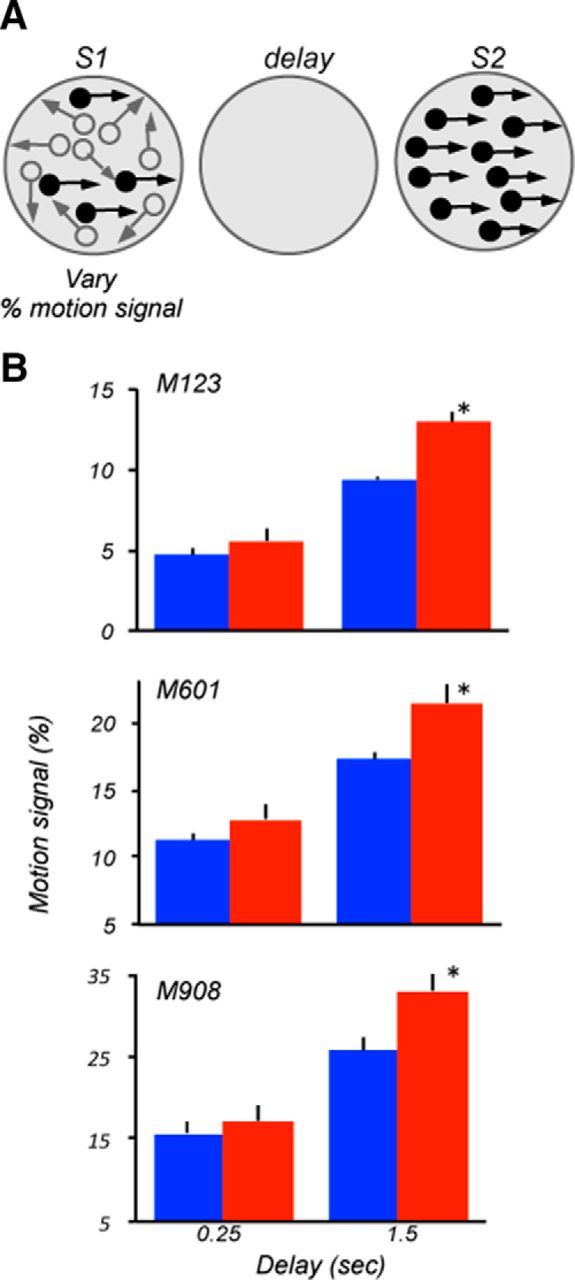Figure 5.

Lesion effects on motion signal thresholds. A, Stimulus configuration used during the task. Thresholds for discriminating directions were measured by varying the proportion of dots moving in the same direction in the field of dots moving in random directions. Stimulus parameters and locations were identical to those used to measure range thresholds (Fig. 3). B, Motion signal thresholds measured at short and longer delays for the three lesioned monkeys. At the shorter delay, all three animals showed similar ipsilesional and contralesional thresholds (M123, p = 0.12; M601, p = 0.3; M908, p = 0.61; two-tailed t test). However, at the longer delay, all three monkeys showed weaker thresholds for contralesional stimuli (M123, p = 0.008; M601, p = 0.04; M908, p = 0.014).
